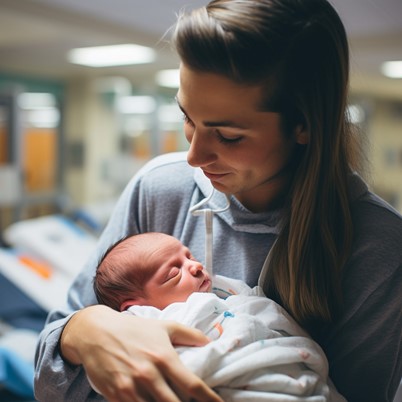What is HIE?
April is HIE awareness month, which is a serious condition that not many people are aware of. It stands for Hypoxic Ischemic Encephalopathy and it affects one in every 1,000 babies every year in the UK.

For parents who are expecting or researching potential issues with babies, it can be distressing to think about this condition with it being potentially fatal. However, babies can fully recover from it too, so it’s important to get a balanced perspective on what it is, its causes and how to deal with it.
As April is the awareness month for HIE, we thought it’d be a good idea to do just that. So, to help you become more aware of this unfortunate condition, our guide below has all the information you need to know. While we hope you won’t need it, it’s always better to be prepared, so continue reading to find out more.
What is it?
HIE is a complication caused by a lack of oxygen or blood flow to a baby’s brain during the birthing process. The outcome of this complication can be brain injuries and it can prove fatal in some instances.
Around one in five babies affected will sadly pass away during the postnatal period but a full recovery is also possible.
What causes HIE?
Several events can put babies at risk of this condition. Some of the most common reasons for HIE include:
* Low or high blood pressure in the mother
* Heart problems in the baby
* Uterus or placenta issues
* Labor and delivery injuries to places like the umbilical cord
* Emergency C-sections
* Poor oxygen supply throughout the pregnancy
How can I spot the symptoms of HIE?
Spotting the signs early is the best way to get your child through this tough time, so keep an eye out for the following symptoms:
* If they’re highly alert or lack energy
* Difficulty breathing
* Avoiding eating
* Seizures
* Problems with their muscles or reflexes
* Slow heart rate
* Organs failing
What should I do if I suspect my child has HIE?
The first step is to see a doctor. They’ll perform blood, umbilical and placenta tests, do an ultrasound of the head and a brain MRI. The doctor may then be able to diagnose them, but a diagnosis can happen later in life too.
During this process, you should consider speaking to a professional if you suspect that this brain injury was caused due to someone else’s negligence. Your child may be owed compensation to help them live a normal life.
After a diagnosis, treatment can begin. There are two main options: therapeutic hypothermia where a cooling system is used to lower the body temperature and supportive care such as a ventilator to help them breathe.